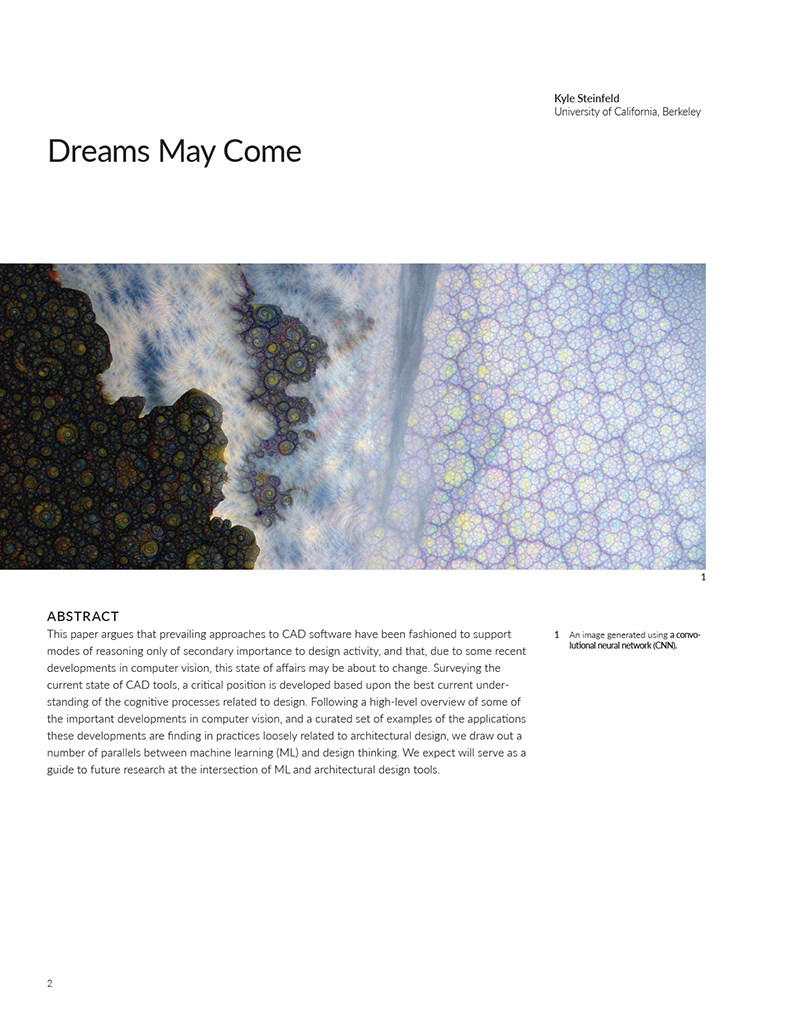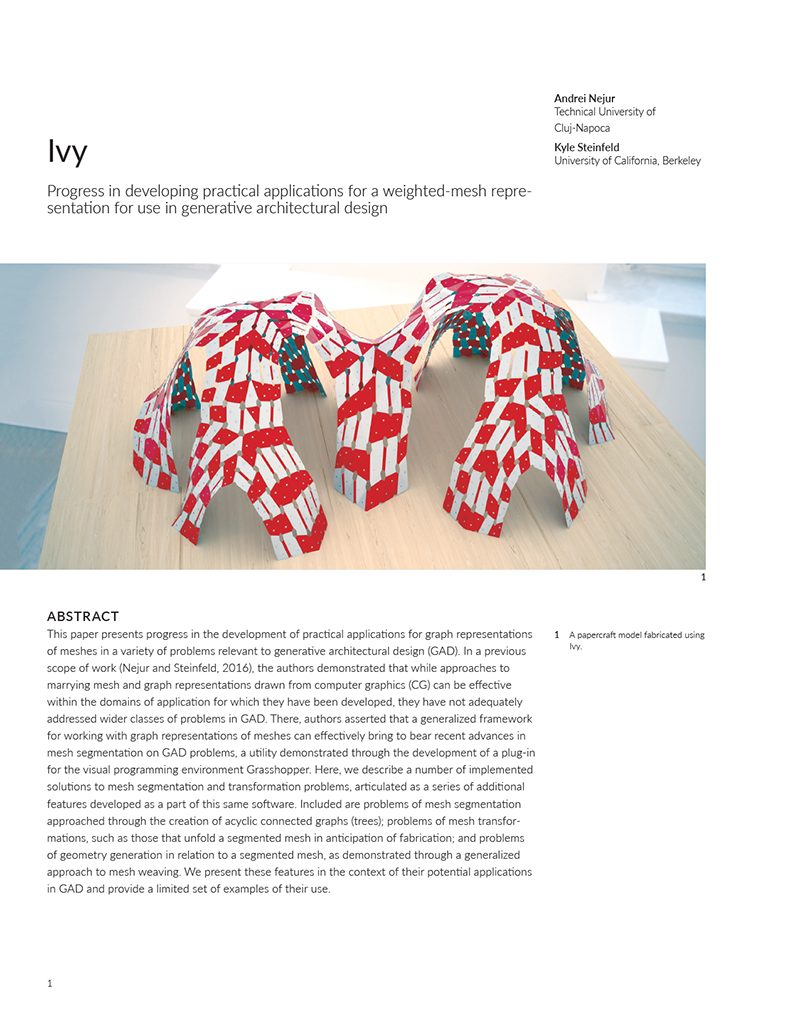Death Valley
NeurIPS 2017 Machine Learning for Creativity and Design
Kyle Steinfeld
In work exhibited at the NeurIPS 2017 Machine Learning for Creativity and Design, we developed a process for relating depthmaps extracted from Google Street View panoramas with the corresponding photographic information. A number of separate models were produced using limited geographic areas of selected cites. With these depthmap-to-panoramic cityscape models trained, we are able to generate new images from unrelated depthmaps which resembled photographic images of the selected cities. This is demonstrated using a javascript app (not currently online) and documented in still images and a series of videos.

